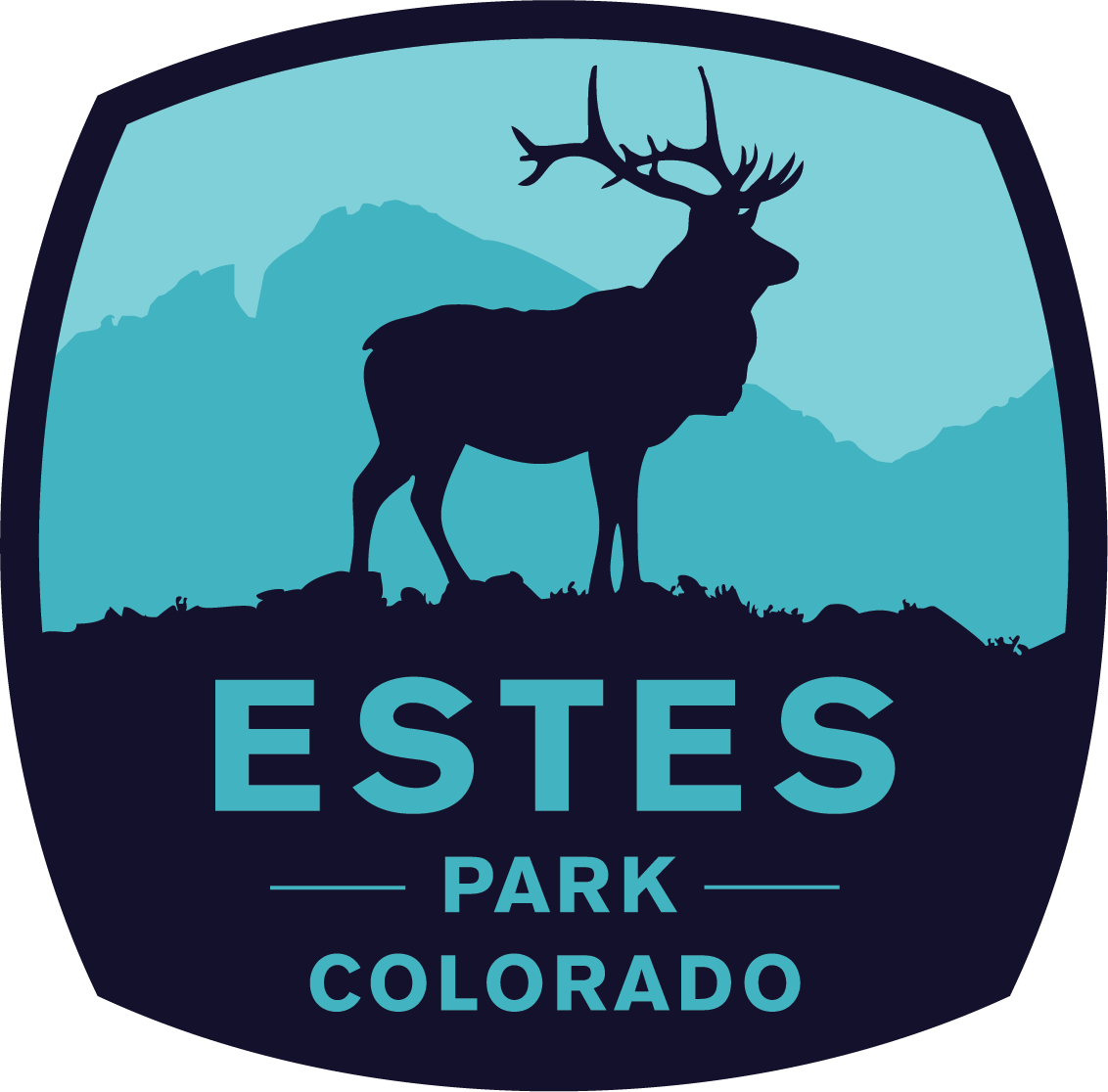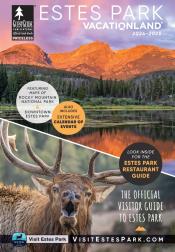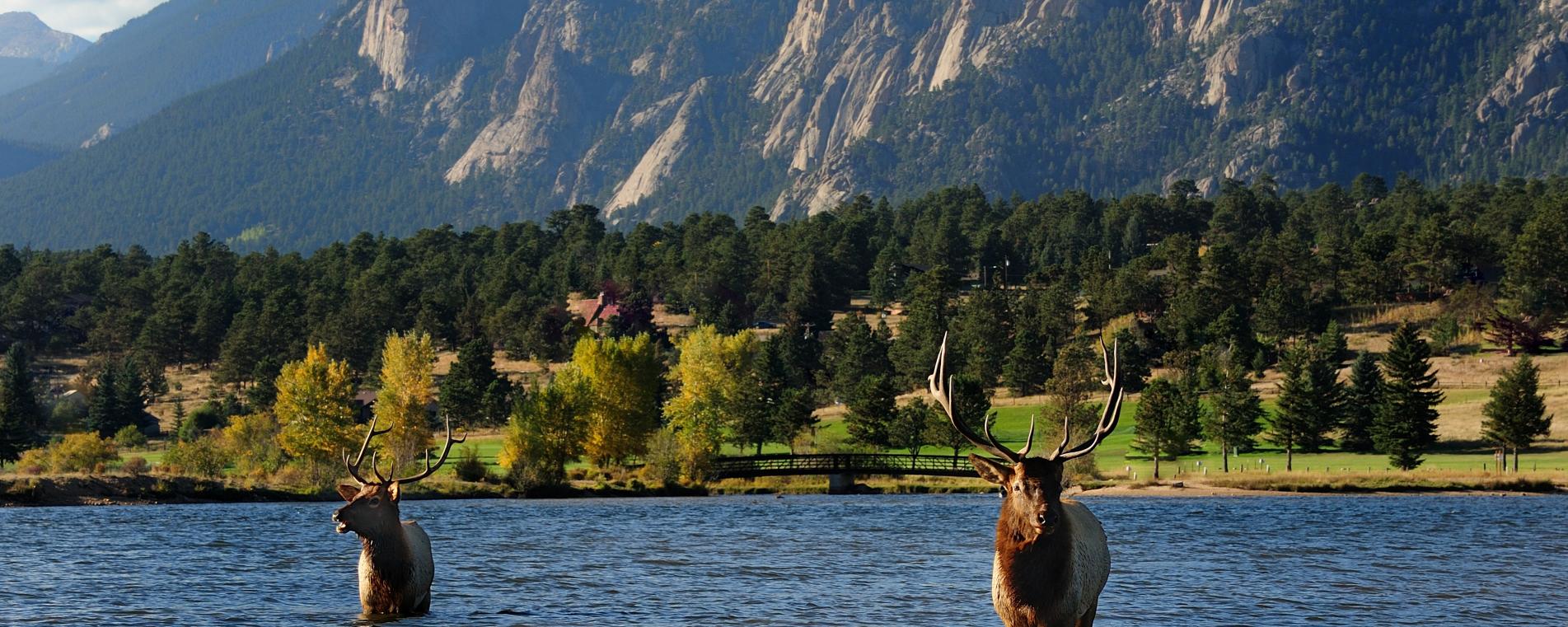
Wildlife Watching
Where Wild Meets Life
The wonder of Estes Park lies in the natural beauty that surrounds this majestic mountain village. Cradled on three sides by Rocky Mountain National Park and edged by the national forest on the fourth, Estes is surrounded by protected lands that offer natural habitat to hundreds of animal species. Whether you are backpacking deep into the backcountry or driving through town, you are very likely to encounter some of our wilder residents. Prepare to be awed!
The Big Guys (and Gals)
When it comes to wildlife encounters, often the most jaw-dropping are with the larger animals. In the Estes Valley and the national park, this typically means sighting regal elk and charismatic mule deer. With around 3,000 elk in Rocky Mountain National Park and Estes Park, interactions between humans and elk are a daily occurrence. Fall and spring offer magical elk viewing thanks to the rut (mating) and calving seasons, respectively. While these can be fascinating sights to behold, viewers should take precautions as the elk can be much more aggressive during these times, the cows defending their young in the spring and the bulls defending their harems in the fall. See our safety tips for additional information.
Similar to elk, mule deer abound throughout the area and, while much more skittish, will often ‘pose' for pictures with their wide, dewy eyes looking straight at your lens. Into the wilderness guests may glimpse one of the park's most mysterious animals, the moose. Most often seen past Trail Ridge Road's Alpine Visitor Center, on the western side of the park, these incredible creatures can occasionally be spotted in the Wild Basin area, near Cub Lake or along Fall River Road. Keep your eyes peeled for these massive mammals - they're surprisingly hard to spot!
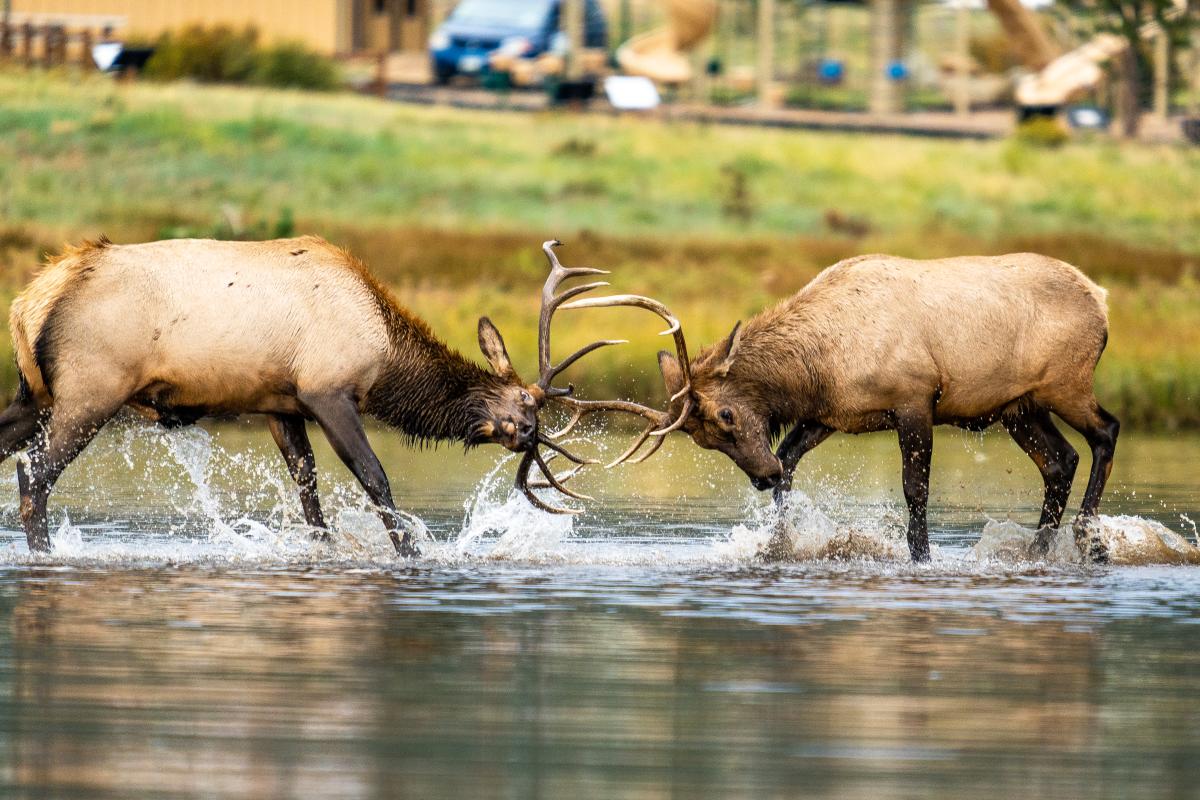
Other larger mammals in the area include bighorn sheep, black bears and cats. Sheep are often seen around Sheep Lakes in the national park during the summer months, along Fall River Road and in the Big Thompson Canyon (along Highway 34). Bears occasionally are spotted in the park or near town, when not hibernating. Please take precautions to secure food in order to protect the bears, the people exploring their habitat and other personal property. Large cats in the area include mountain lion, bobcat and the rare Canadian lynx. Mountain lions are very stealthy and difficult to spot. Bobcats and lynx look very similar, but if you spot one, you've likely just seen a bobcat! Bobcats can be found in the park as well as in and around Estes Park.
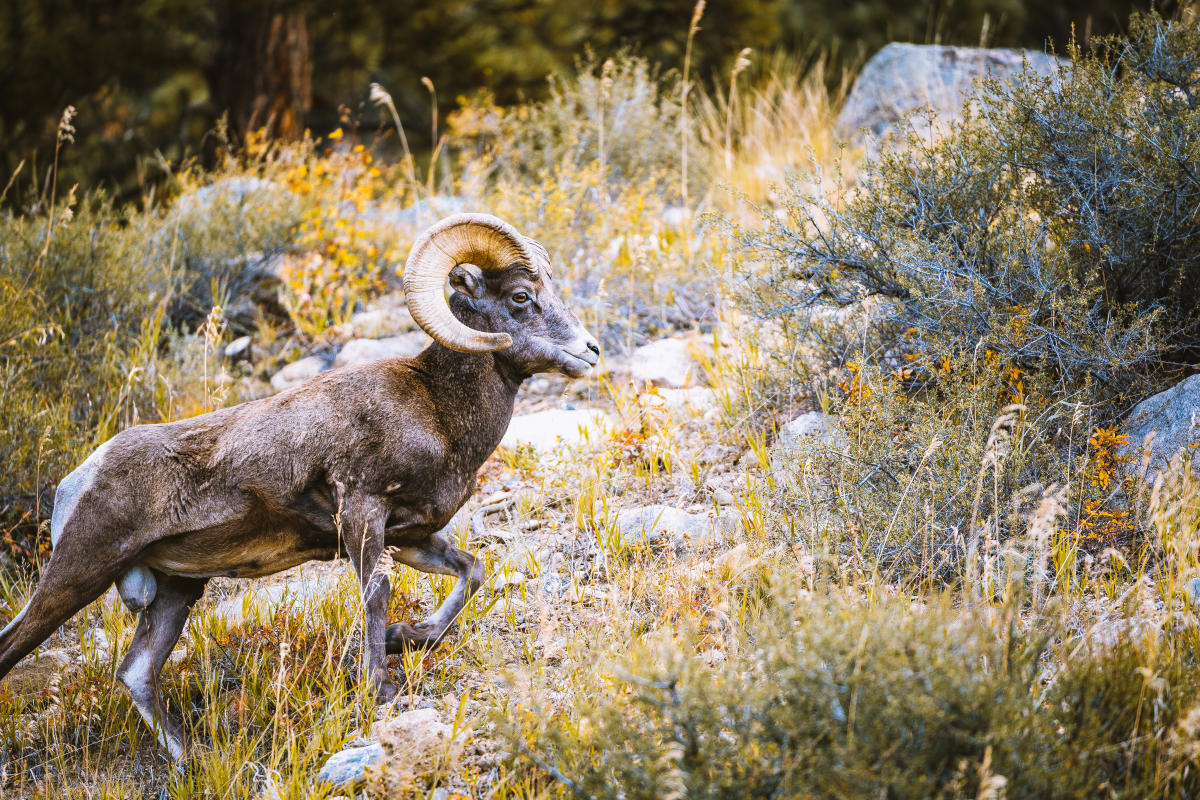
The Little Critters
While the larger mammals get the glory, the little creatures get the smiles. Sometimes referred to as the ‘welcoming committee', the smaller of the furry friends can be seen quite often, especially around picnic areas and in the open meadows (though please keep in mind that it is illegal and unhealthy to feed them). Chipmunks, ground squirrels and rabbits frolic and scurry through the park and parts of Estes Park. Beaver may be found along the waterways around town and the park, while otters make their homes by the Colorado River on the west side of the park. In the higher elevations and in the alpine tundra (above the tree line), look out for marmots and pikas.
Over 280 different species of birds can be found in Rocky Mountain National Park and the Estes Valley. Please see the Estes Park birding page or the pages on winter/spring and summer/fall birding in the national park for additional information on area species and top locations.
Additional animals found in the area include coyotes, garter snakes, the rare boreal toad, fox, porcupines, bats, mice, fish and more. For more on these and other wild animals in the area, please visit the national park website at NPS.gov/ROMO.
Birding
Throughout the Estes Valley, birders find easy access to environments that support large numbers of native and migratory bird species. In fact, the combined landscapes of Estes Park and the preserved wilderness inside Rocky Mountain National Park offer an unsurpassed opportunity to view more than 315 species of birds, including waterfowl, raptors, game birds, passerines, owls and many others.
Although the variety of habitat-mountain, tundra, woodlands and grasslands-makes birding in Rocky Mountain National Park extra special to birdwatchers with a checklist, the Estes Valley birding season runs all year long. In spring and summer, the shores of Lake Estes promise all kinds of birds-waterfowl, of course, but also sandpipers and gulls. Elsewhere in the valley during these seasons, thrushes, finches, swallows, warblers, bluebirds, and hummingbirds-often rufous and broad-tailed varieties-migrate. Bald eagles also use this time to establish nests, often on the lake's north side. Area woodlands fill with bird songs, tweets and twitters-clear indicators that the lands are alive with birds.
The national park usually closes its Lumpy Ridge area from early March through mid-summer, but that doesn't stop birders with high-power binoculars from spying nesting raptors and their hatchlings. Prairie falcons, red-tailed hawks, American kestrels and peregrine falcons nest among the cliffs here and on Sheep Mountain.
Come fall, migratory waterfowl descend into the Lake Estes area again. The Matthews-Reeser Bird Sanctuary located along the lake's south side bustles with comings and goings, making it a good spot to see mallards, teal, coot, mergansers, redheads, widgeon, swans, gulls, Canadian geese and the occasional pelican.
In October through November, bird watchers are most likely to see year-round feathered residents, such as rosy-finch, Northern shrike, waxwings and the occasional rough-legged hawk. In December, bird watching begins in earnest when the National Audubon Society organizes its annual Estes Park Christmas Bird Count. Anyone with basic bird identification skills is welcome to participate as a field counter or feeder watcher.
Even if you've never been much of a birder, try it in Estes Park. It's a free, fun activity with almost guaranteed rewards every time you turn your eyes toward a tree, a bush or a meadow. All you need are binoculars and a decent bird guide, both available from village shops.
Tips for Respecting the Wildlife and Viewing them Safely
Remember, even the animals you see in town and near people are wild and will defend themselves if they feel threatened. Being knowledgeable about the wildlife, their behaviors and habitats will help in knowing where to go, when to be on alert and when to adjust your behavior to ensure a peaceful, fun experience for all.
Here are a few tips to help keep you and the animals safe:
- Keep a safe distance and stay alert - if the animal changes its behavior, appears startled or notices you, you are too close.
- Never approach or attempt to touch wildlife!
- Be extra aware during sensitive times, such as spring calving and fall mating seasons for elk and moose, when animals can be aggressive or defensive.
- Use binoculars and zoom lenses to observe and photograph wildlife from a safe distance.
- Do not imitate an elk bugle or call during the fall mating season, as it may irritate or threaten the bull, endangering you and him.
- Do not follow or chase animals and do not let children or pets do this either. If the animals is moving away from you, it is a sign that they need more space.
- Obey all state and national park laws. Observe signs and postings of area closures.
- Never feed wildlife, no matter how small or accustomed they are. Human food, even peanuts, are unhealthy for the animals and this practice makes the dependent on people for food, often detrimental to their survival.
- Never stop or block traffic. If you spot wildlife while driving, avoid stopping abruptly. Look for a place where you can slowly and fully pull off the road to park.
- Be aware of and respect private property.
- Keep pets in the vehicle or secured on a leash at a long distance, as they may frighten or provoke wildlife.
- Follow proper procedures and regulations to secure food and food trash whether in the car, at the campground or at your lodging: Use bear-proof containers, lockers or trash receptacles (the trunk of your car is not bear-proof), close windows, and lock doors of unoccupied cars or lodging (find more at NPS.gov/ROMO).
